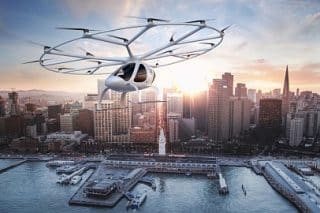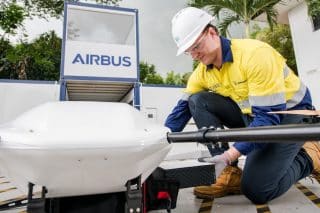While drones have often been considered toys or leisure items, they are increasingly being used in industry and represent serious potential for saving time and money. We spoke with Thomas Nicholls, Chief Marketing Officer for industrial drone manufacturer Delair, about the place of drones in industry today and in the future.
According to him, industries are likely to need drones in the future.
It’s all about what can be seen from the sky. Every company that has something that is interesting to inspect from the sky is or could be a customer of commercial drones.
Companies with broad infrastructure such as powerlines, railways or roads can significantly reduce their costs by using drones for inspections. Construction sites and mines are two other areas where drones like the ones made by Delair are being used, Nicholls explains:
Before they start digging into a mine or building a construction site, they need to get a digital plan of the area where they’re going to do their work, and then what they do is they get their digital model and they use that to build their architectural or engineering plans. Then when they start the work they keep flying the drones regularly and use software analytics on the drone data in order to compare what was planned to what the reality is.
The notorious problem of drones’ short battery-life is obviously a priority, but Nicholls considers that industrial drones aren’t in a bad position at the moment:
The type of drones that are used in industry fly for up to three hours. So you get large-scale observations and the goal for the industry, especially when there are large areas to cover, is to do as few flights as possible.
In such a competitive field, Nicholls believes the future of drones lies in software rather than hardware developments. He expects hardware developments will lead to more innovation for example in pushing the battery life even further.
Today the real obstacles for drone hardware innovation lie not so much in technical research and development but in national legislation limitations. According to him,
Our drones already today can fly up to three hours. But most of our customers can’t fly for that long because regulations in their country limit what they can do.
Nicholls hopes that in the future this will be freed up:
We have seen governments actually taking a very proactive initiative to working with industrial companies and drone suppliers on establishing new regulations in order to make sure that when we have more and more drones in the airspace they will be well-coordinated and safe. And that’s going to be a huge enabler for developing the industrial drone market.






